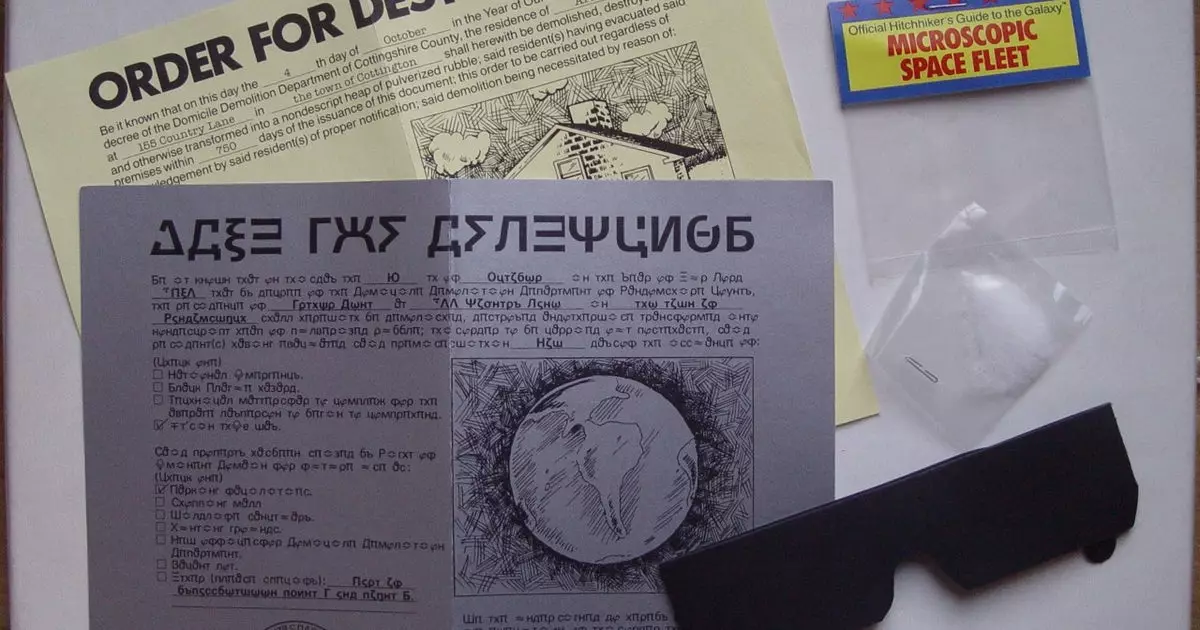In an era where the gaming industry is dominated by blockbuster franchises and meticulous branding, it’s refreshing to look back at a time when video games were not just about high scores and graphical fidelity, but also about creativity and personal experience. This nostalgia takes us to the 1984 release of “The Hitchhiker’s Guide to the Galaxy,” an adventure game by Infocom that dared to reimagine the gaming experience with its inclusion of physical components, affectionately referred to as “feelies.” The concept, as Scott Krol notes, represented a groundbreaking blending of gameplay and tactile interaction. It evokes a world where players weren’t just passive consumers but active participants in their own gaming adventures.
These feelies had a charm that transcended traditional gaming components. They transformed an ordinary gaming session into a treasure hunt for the imagination. From bags that contained nothing but evocative labels hinting at unseen mysteries to quirky pamphlets and maps, each item invited players to dive deeper into the narrative, merging the worlds of physical and digital play. It’s not just about the gameplay anymore; it’s about developing an emotional connection to the story and characters through these artifacts.
Arthur Dent: The Unsung Hero of the Cosmic Absurd
Victoria Regan’s interpretation of Arthur Dent adds an enriching layer to our understanding of this character. Traditionally viewed through the lens of comedic disaster, Dent is a quintessential everyman thrown into an unfathomable universe. Regan’s characterization underscores a central theme: amidst chaos and absurdity, there lies a certain stoic courage in his response to overwhelming randomness. This observation resurrects Dent from mere comic relief to a symbol of resilience.
His willingness to face cosmic insignificance is a reflection of the human condition — to confront the unknown with a level of grace, however precarious. This perspective allows players to appreciate Dent’s experiences not merely as humorous escapades but as profound encounters with life’s unpredictable moments. Regan’s framing of Dent as a respectable Englishman grappling with the bizarre universe serves as a reminder that our own struggles against societal absurdities are worthy of recognition, even if they sometimes seem trivial.
Rediscovering the Joy of Exploration
Another profound insight from Regan’s piece is her and her brother’s motivation to navigate the convoluted challenges of the game: the timeless desire to discover hidden elements within the narrative. This feeling, increasingly rare in today’s pre-packaged gaming experiences, was pure and untainted by overwhelming expectations or hype. Today, players are often spoon-fed experiences through trailers, walkthroughs, and pre-packaged merchandise that dictate what they should feel. They lose the joy of serendipitous discovery.
In stark contrast, Infocom’s games embraced a unique charm, inviting players into a world woven with mischief and curiosity—a world where the struggle to understand what lay hidden behind challenges was as rewarding as any triumph. This delightful sense of exploration is what makes gaming truly engaging and immersive. The modern industry’s pivot towards disposable collectibles and merchandise can often overshadow this thrill, making it an experience more about acquiring than exploring.
Uselessness as a Badge of Honor
Moreover, the appeal of these As a badge of honor, Infocom’s feelies resonate with an inherent humility that feels absent in today’s market. Items that appear impractical serve a purpose beyond material value. They encourage players to appreciate the quirks of gaming and celebrate the unconventional. Unlike the stark and polished collectibles that dominate today’s shelves—often designed to attract a specific demographic—these artifacts reject convention. They embody a sense of irony and self-awareness, suggesting that not everything needs to be of significant worth to hold value.
The contemporary fascination with elaborately designed statues and collectibles can often feel insistent and calculated, as if the industry itself is dictating what players should covet. In contrast, the charm of feelies lies in their carefree nature—they poke fun at their own existence and encourage a stacking of whimsical tales. They inspire players to traverse the layers of narrative, seeking enjoyment in the absurd rather than material gain.
This is where the real power of gaming lies—not in the grandeur of what’s being offered, but in the unpretentious artifacts that remind us of who we are as players. So here’s to a rise in more humble, quirky, and absolutely useless objects within our gaming experiences—an unstandardized celebration of the unpredictable nature of creativity that games can embody.

